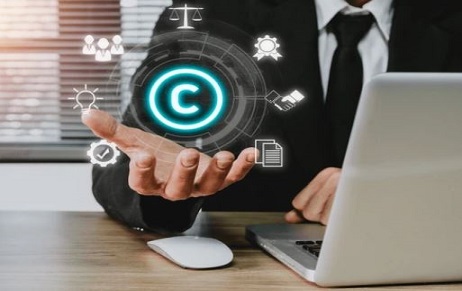“Bad Artists Steal, Good Artists Copy” This famous quote from Pablo Picasso defines what creativity…
Lights Camera Action : Role Of Intellectual Property In Indian Cinema
Introduction
A growing number of daily releases makes India’s copyright laws particularly important in . Evaluating the original author of such works is of critical importance in order to protect and further encourage individuals to partake in the creative business of creating movies, even though the audience watching such works may be unaware of the internal conflict occurring between the various stakeholders involved in such creative process. Where else would intellectual property be used in a screenplay or a film is the next issue. Sincere to say, intellectual property rights are involved in every phase of the film.
[Image Source : Shutterstock]

Copy right and Indian cinema
In contrast to book authoring, the process of making a movie involves a lot of collaboration. It is a process that involves numerous people and their contributions, which result in a film. This drawn-out procedure grants rights to several people carrying out various tasks, such as scriptwriting, music composition, art direction, and particular actor appearances[1]. Finding an appropriate which was before work that may be used as a script is the first responsibility for each film production team. A precise elucidation about the ownership of cinematographic films has been provided by Section 17 of The Copyright Act, 1957 Act. According to the law, a scriptwriter who is engaged by a producer to write a good script has no ownership rights to the work he produces.[2] Who is the author of an underlying work that might already exist before a producer decides to develop a movie then becomes a more intriguing question. The Bombay High Court issued an answer to this question, stating the legal position that, in the event that a pre-existing script over which a writer enjoys copyright was provided for the production of a film, the producer would not possess any copyright over such underlying work until and unless such independent copyright was transferred to the producer[3]. Otherwise, the general position of Indian law, through a mere perusal of the Act vests the authorship of such film, unless the contrary is proven with the producers automatically.[4] The lyrical and literary works, which cover the song and its lyrics, are additional elements that make up such cinematographic films. The “Work for Hire” doctrine, which was established in the landmark decision of Indian Performing Right Society v. Eastern India Motion Picture Association, has been largely upheld in India[5]… wherein preconditions (b) & (c) of Section 17 of the Act affect the rights of composers or lyricists. Lyricists and music composers now have the right to royalties even if a record label or producer acquires ownership of the works as a result of the Act’s 2012 revision[6] This glimpse of protection, however, is short-lived when it comes to musical works in cinematographic films, considering that the producer has the ultimate copyright over such work[7] Therefore, the right to royalty exists only if the musical work or literary work, i.e., lyrics were exploited by a non-film song.[8]
Who Owns What and Why
The aforementioned elements are those that are most frequently disputed when discussing copyright ownership. However, as demonstrated, the Indian copyright regime actively supports the notion that a cinematographic film’s producers are the true owners of the copyright. Members of the film community have openly criticised this strategy since it shows a complete disrespect for the individual talent and work put in by the numerous actors and crew members during the production of a film. But this “producer owns all” strategy has existed since the dawn of time. This might be attributed as having its origins in the French copyright system’s “Auteur” or author approach. In this case, it was once believed that the director ultimately owned the copyright to the work because he was the supreme decision-maker and predominantly displayed his vision on screen.[9] However, the focus on producer as the ‘dominant author’ in such scenarios has been reinforced not only by Indian case laws but also recently by the USA as well in the case of Casa Duse, LLC v. Merkin[10] It was decided that even while the director may have a significant say in how the movie should be filmed, the producer owns the copyright because they are more heavily involved in gathering the script, creating third parties or employment contracts with performers, etc. Such a strategy has drawn criticism, but it is important to remember that producers are ultimately responsible for all financial risks associated with film production. Giving them all the rights and protection they require seems justified, but there is no getting around the fact that when negotiating contracts with composers, scriptwriters, and others, the latter frequently show a lack of caution when they blithely cede their rights to the work that they were primarily responsible for creating. The contract makes a significant difference when it comes to the right in respect to works utilised in films, even though the music composers in the example above may still assert a royalty claim for non-film works. In the end, relative to all other parties involved, the producer bears the brunt of the financial pain if the movie is a financial failure. In light of this, the Hon’ble Supreme Court of India and courts in other countries have maintained this stance. However, a change would be appreciated if, at the very least, the ability to claim royalties was not restricted to being awarded exclusively for non-film works given that composers might make the majority of their money from the songs they write for movies.
Conclusion
One of the main ways that the general population is entertained is through films or movies. The danger of possible loss that the producer may have to endure, however, increases due to the complexity of the production process and the requirement for the engagement of numerous technical departments.Getting the full profit from the exploitation of the film or movie made is much more challenging in the digital age with movies streaming on multiple digital platforms.It is crucial to have title documents declare in unambiguous terms that all arising rights are vested in the producer from the beginning itself in order to minimise this danger as much as possible, if not completely avoid it.
Author: Kamlesh singh is a third-year student of Bharti Vidyapeeth new law college, in case of any queries please contact/write back to us via email to [email protected] or at IIPRD.
[1] https://www.wipo.int/pressroom/en/stories/ip_and_film.html
[2] Indian Copyright Act 1957, s 17(b), .
[3] Salim Khan & Ors v Sumeet Prakash Mehra & Ors [2013] 5 Bom CR 556.
[7]CISAC v. Aditya Pandey [2016] SCC Online SC 967
[8] Indian Copyright Act 1957, s 19(10).
[10] 791 F.3d 247 (2d Cir. 2015) .



